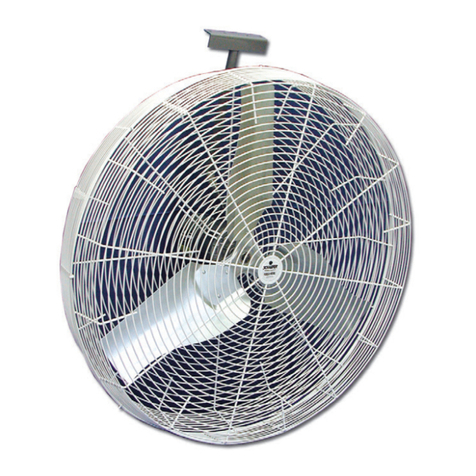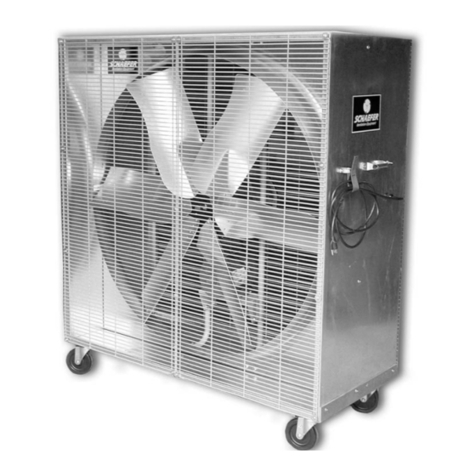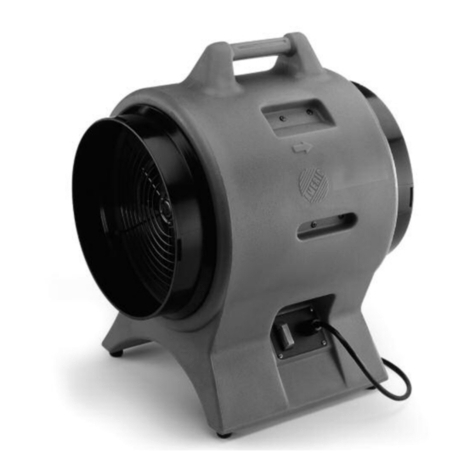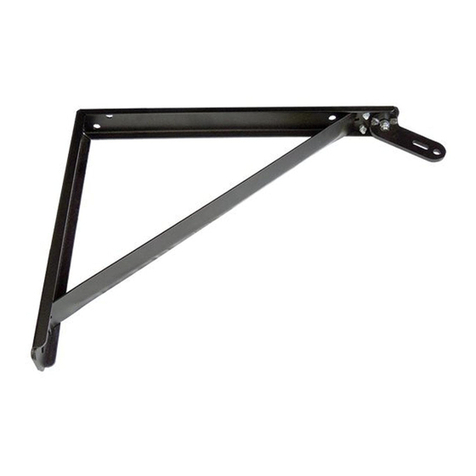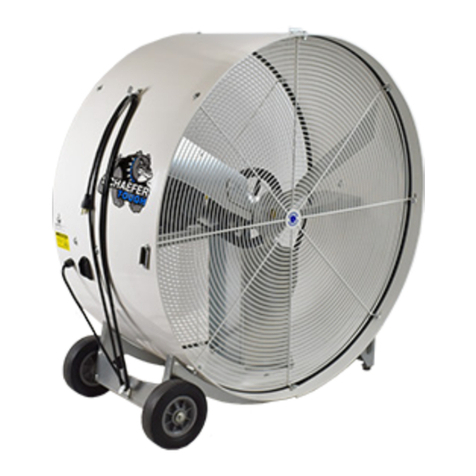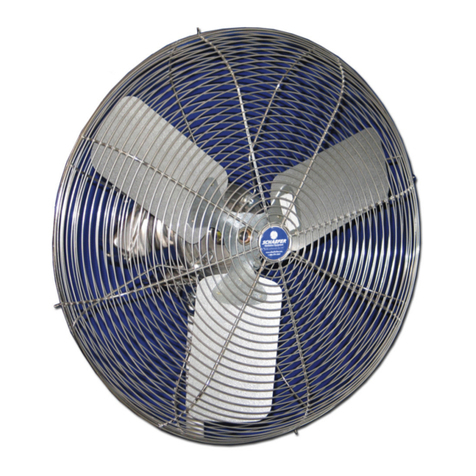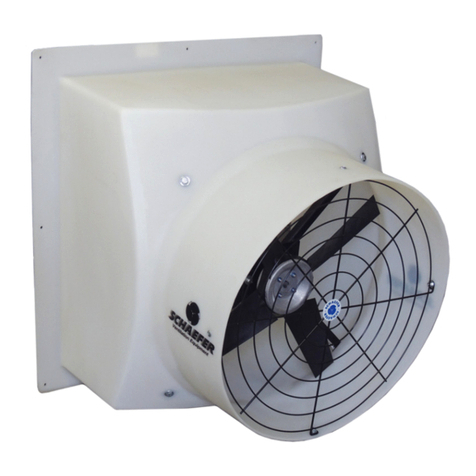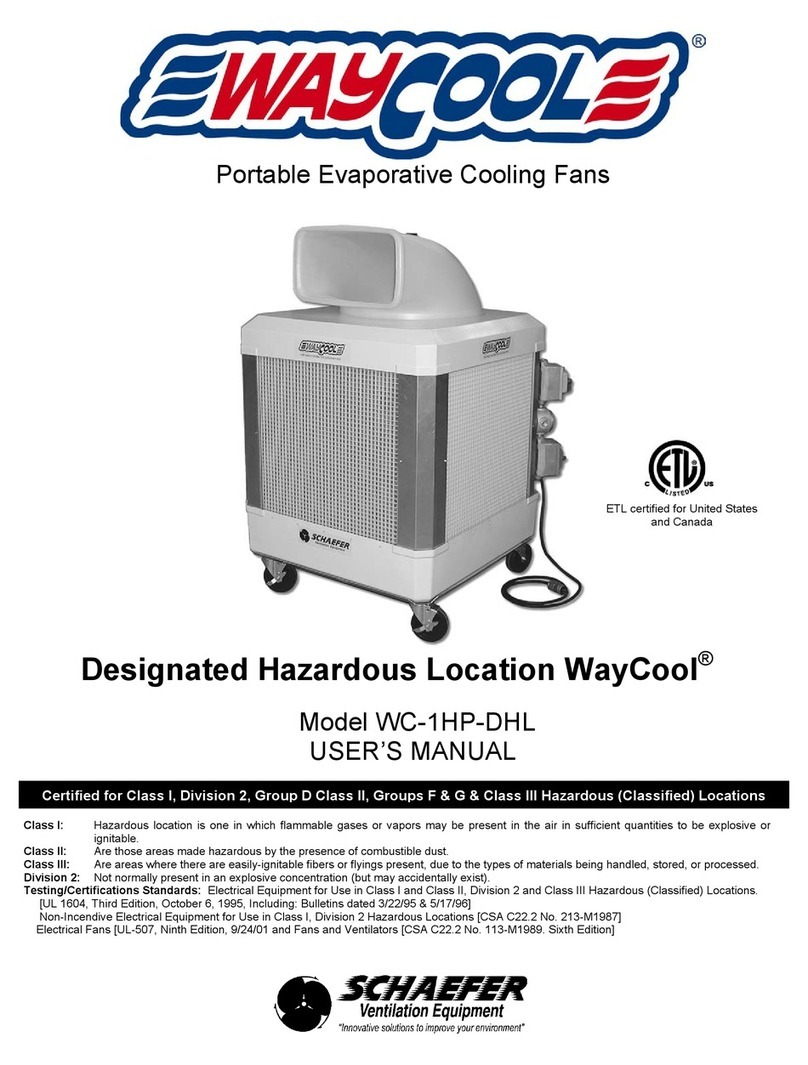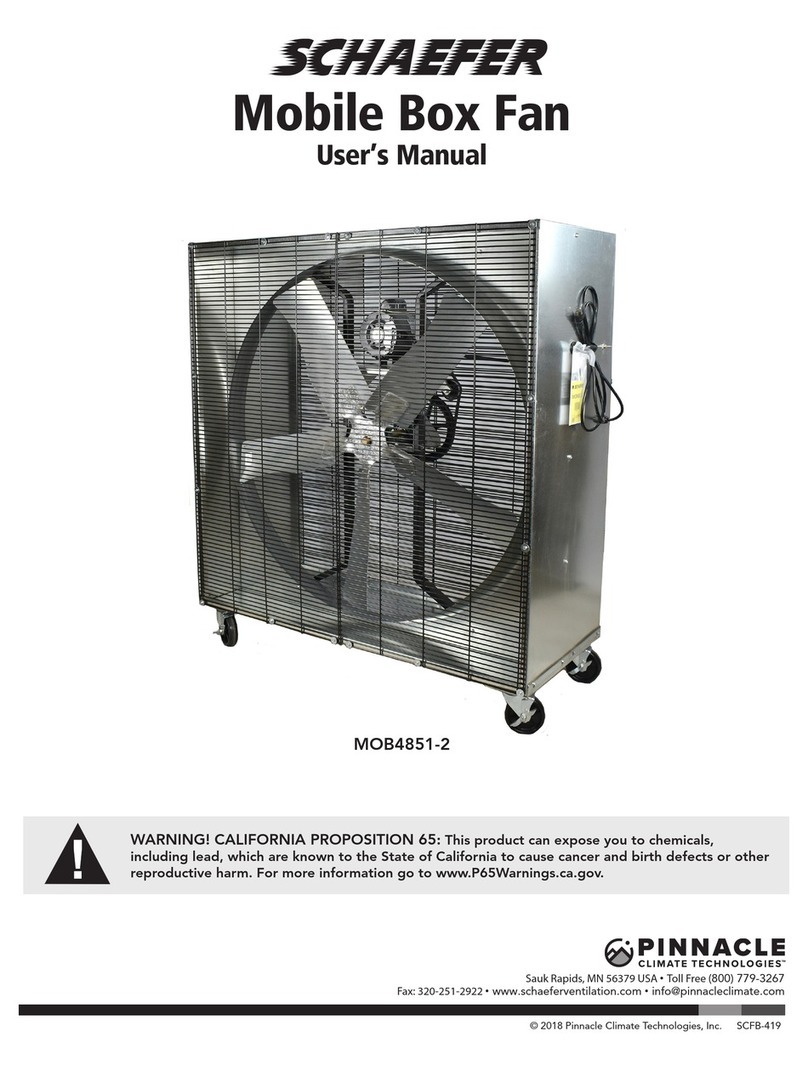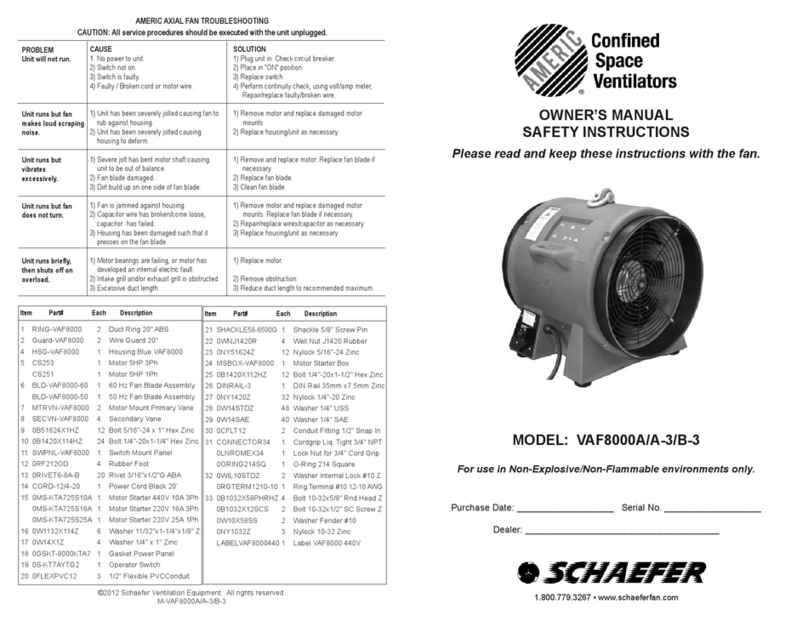Schaefer Limited Warranty Policy
Schaefer Ventilation Equipment, LLC (SVE) provides the following limited
warranty from the date of invoice to the initial purchaser of our products or
to its customer with a dated proof of purchase:
I. Two-year coverage applies to all products, components and assemblies
provided by SVE that prove to be defective in material or workmanship.
Any such defective product will be repaired or replaced at SVE’s
option, with the defective product or component returned, upon
approval, to SVE, F.O.B Sauk Rapids, Minnesota.
II. This warranty does not cover:
a. Failure, damage or malfunction as a result of:
i. Improper installation or installation not in accordance with
installation instructions.
ii. Operating conditions that vary from SVE’s operating
instructions.
iii. Misuse, abuse, negligence, alteration, or accident.
iv. Transporting the product.
v. Improper operation or lack of appropriate or regular
maintenance of the product.
b. Loss of time, inconvenience, loss of use of the product or
other consequential or incidental damages.
c. Parts that need replacement due to normal wear and tear.
d. Superficial or cosmetic rust or corrosion.
e. Any product whose name plate has been removed.
THERE ARE NO WARRANTIES OF MERCHANTABILITY OR FITNESS
OF USE.
Schaefer Ventilation reserves the right to change product design
and specification without prior notice or liability.
The above constitutes the sole warranty offered by Schaefer Ventilation
Equipment, LLC.
LUBRICATION
An automatic lubricator can be installed in the air line just ahead of the motor. The lubricator should be
adjusted to feed one drop of oil per minute. Lubrication is necessary for all internal moving parts and rust
prevention. Excessive moisture in the air line can cause rust formation in the motor and might also cause ice
to form in the muffler due to the expansion of air through the motor. The moisture problem can be corrected by
installing a moisture separator in the line and also by installing an after cooler between the compressor and air
receiver. USE DETERGENT SAE #10 AUTO OTIVE ENGINE OIL.
SERVICING AIR MOTOR
If the motor is sluggish or inefficient, try flushing with recommended solvent. The recommended solvent for air
motors and lubricated pumps is Gast Flushing Solvent, Part #AH255 or AH255A, Demkote 2X726 Safety
Solvent, Inhibisol Safety Solvent or Dow Chemical Chlorothane.
To flush the unit, disconnect the air line from the coupler plate and remove the felt inside the muffler assembly.
Add several teaspoons of solvent directly into the air motor fitting. Rotate the fan shaft by hand in both
directions for a few minutes. Connect motor to an adjustable air supply. Slowly apply pressure until there is no
trace of solvent in exhausted air system. Reinstall the felt insert and secure the muffler cap.
CAUTION: Foreign material exiting the air motor can be hazardous. Solid or liquid material exiting
the unit can cause eye or skin damage. Keep away from air stream. Keep face away from exhaust
port. Eye protection is required.
CAUTION: Flush unit in a well-ventilated area only.
Re-lubricate the motor by squirting a drop of oil in the chamber. If the vanes need replacing or foreign
materials are present in motor chamber, an experienced mechanic may remove the end plate opposite the
drive shaft end. DO NOT PRY WITH A SCREWDRIVER.
It will dent the surface of the plate and body causing leaks. A puller tool should be used which will remove the
end plate while maintaining the position of the shaft. New vanes should have the edge with the corners cut on
an angle or the notched edge towards the bottom of the vane slot.
If motor requires service, it is highly recommended that the user remove the motor from the
housing as per the instructions provided in this manual and return it to the factory for repair.
A service kit is available; however, it should only be installed by a qualified mechanic. The
tolerances inside the air motor must be maintained to ensure top operating performance.
SHUTDO N AND STORAGE PROCEDURE
1. Turn off air intake supply and remove plumbing.
2. Remove air motor from the connecting machinery.
3. Use clean, dry air at low pressure to ‘flush out’ condensates, such as water.
4. Re-lubricate the air motor with a squirt of oil in the chamber. Rotate the shaft by hand several times.
5. Plug or cap each port. The unit is now ready for storage.

